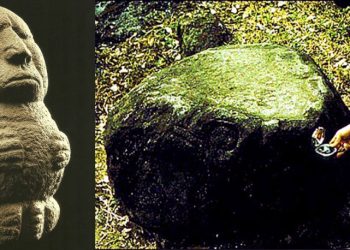Medieval Europe was captivated by relics, with fragments from Jesus’ crucifixion holding the highest esteem. But what happened to the fabled “True Cross”?
The term “True Cross” refers to the crucifix on which Jesus is believed to have been crucified and is revered as a religious artifact. While there are no early records of the apostles or initial Christians preserving the actual cross, the practice of using the sign of the cross for protection was common by the 2nd century. Post-Nicene historians like Socrates of Constantinople recount that Helena, mother of Roman Emperor Constantine I, journeyed to the Holy Land between 326 and 328, establishing churches and aid organizations for the underprivileged.
Late 4th-century historians Gelasius of Caesarea and Tyrannius Rufinus claim she found the hidden location of three crosses thought to be used in Jesus’s crucifixion and those of the two thieves, St. Dismas and Gestas, who were executed alongside him. One cross had the titulus with Jesus’s name, but according to Rufinus, it wasn’t until a miracle occurred that Helena was certain she had discovered the True Cross.
The Discovery of the True Cross
Helena Augusta, mother of Roman Emperor Constantine, is said to have unearthed the True Cross at the Holy Sepulchre site. Three crosses were discovered alongside the nails and ‘Titulus Crucis’ sign, with a miraculous healing confirming the True Cross.
Pieces of the Cross Spread Across Europe
After Constantinople’s sack during the Fourth Crusade, pieces of the True Cross dispersed throughout Europe. Theologian John Calvin remarked that there were enough fragments to build a boat.
The Infinite and Indestructible True Cross
The lucrative trade in relics was supported by the idea that the cross, imbued with Christ’s blood, was indestructible and infinitely divisible.
Veneration and Celebration of the True Cross
Encased in bejeweled metal boxes, fragments of the True Cross were displayed in reliquaries, becoming focal points for worshippers and inspiring religious ceremonies.
The True Cross Today: Fragmented and Scattered
While many fragments have been lost, some remain in major religious institutions, such as St. Peter’s Basilica in Rome and Notre Dame Cathedral in Paris.
- Santa Croce, Italy: Housing three small fragments alongside other relics in the Cappella delle Reliquie, with a larger piece moved to St. Peter’s Basilica in 1629.
- Notre-Dame de Paris, France: Originally in Sainte-Chapelle, this fragment was preserved during the French Revolution and transferred to Notre-Dame Cathedral. It is now in the Louvre following the 2019 fire.
- Scuola Grande di San Giovanni Evangelista, Italy: A piece given to this Venetian school in 1369 has a miraculous story involving Andrea Vendramin saving it from a canal.
- The Moskva, Black Sea: A district archpriest claims a fragment of the True Cross was aboard the Russian cruiser Moskva, which sank in 2020 during the Russia-Ukraine War.
PLEASE READ: Have something to add? Visit Curiosmos on Facebook. Join the discussion in our mobile Telegram group. Also, follow us on Google News. Interesting in history, mysteries, and more? Visit Ancient Library’s Telegram group and become part of an exclusive group.











